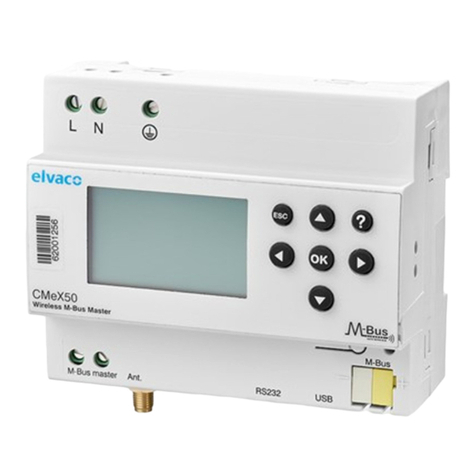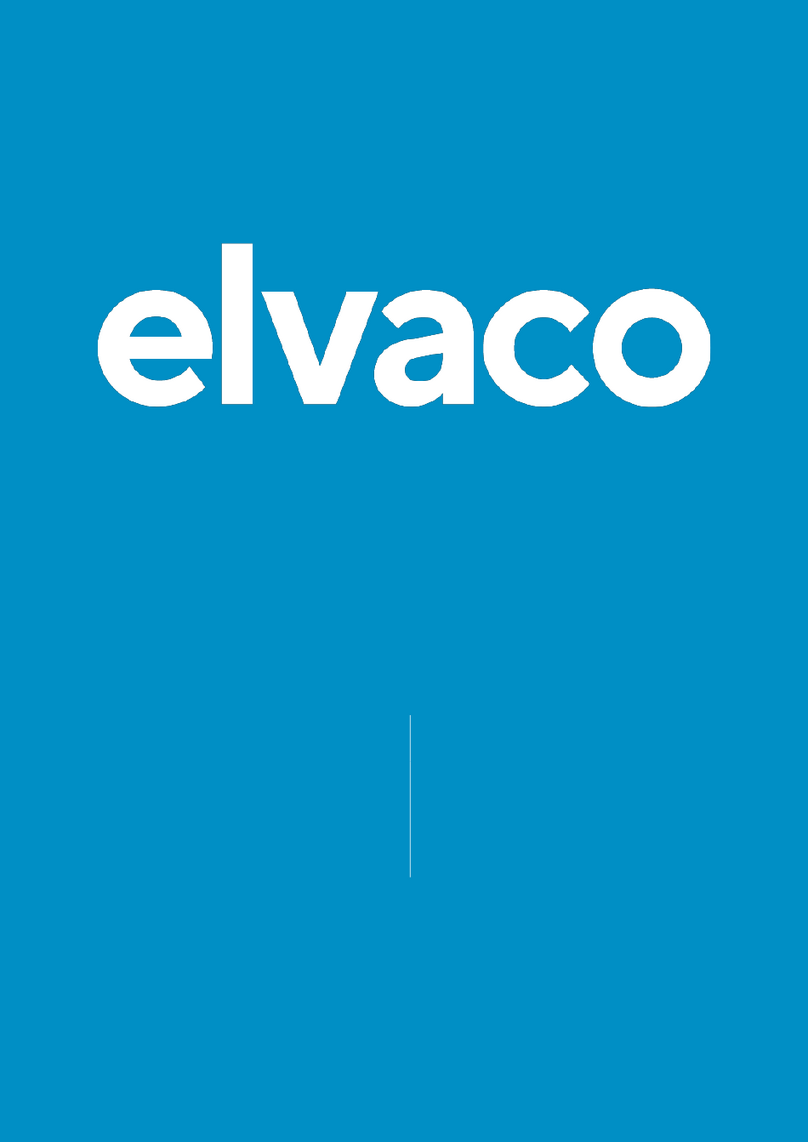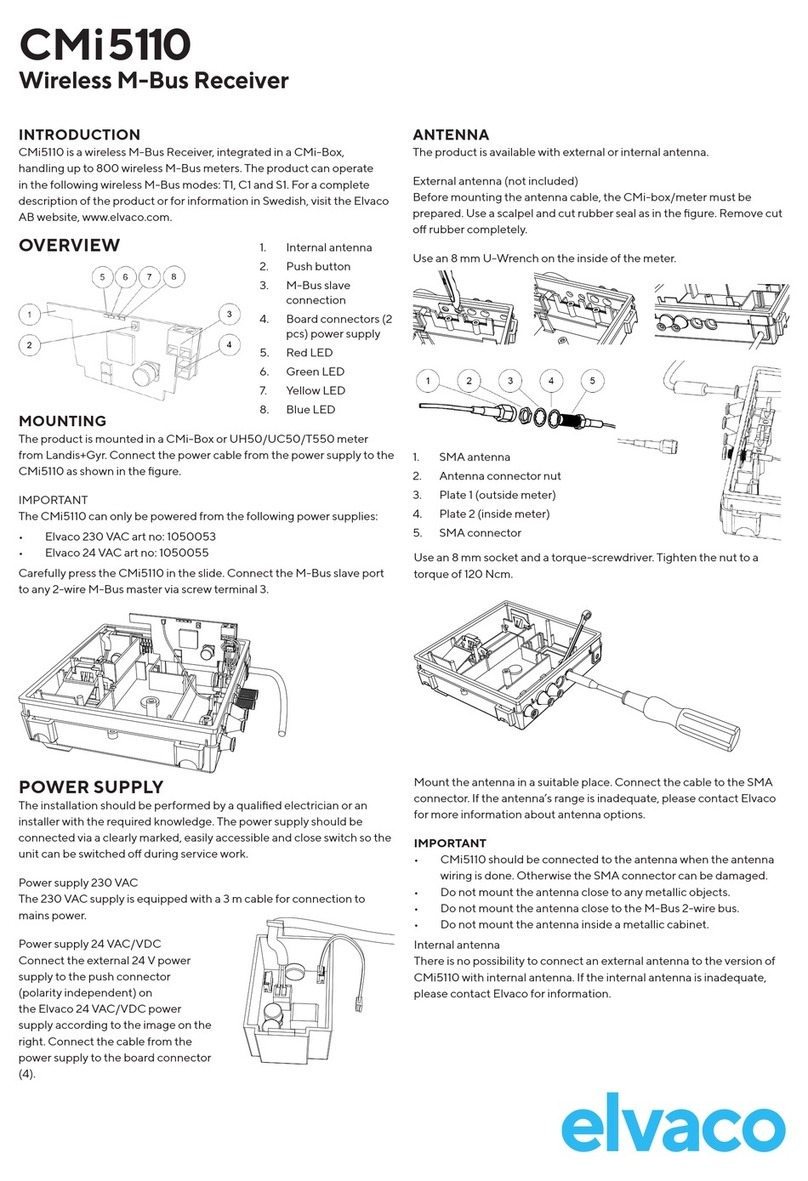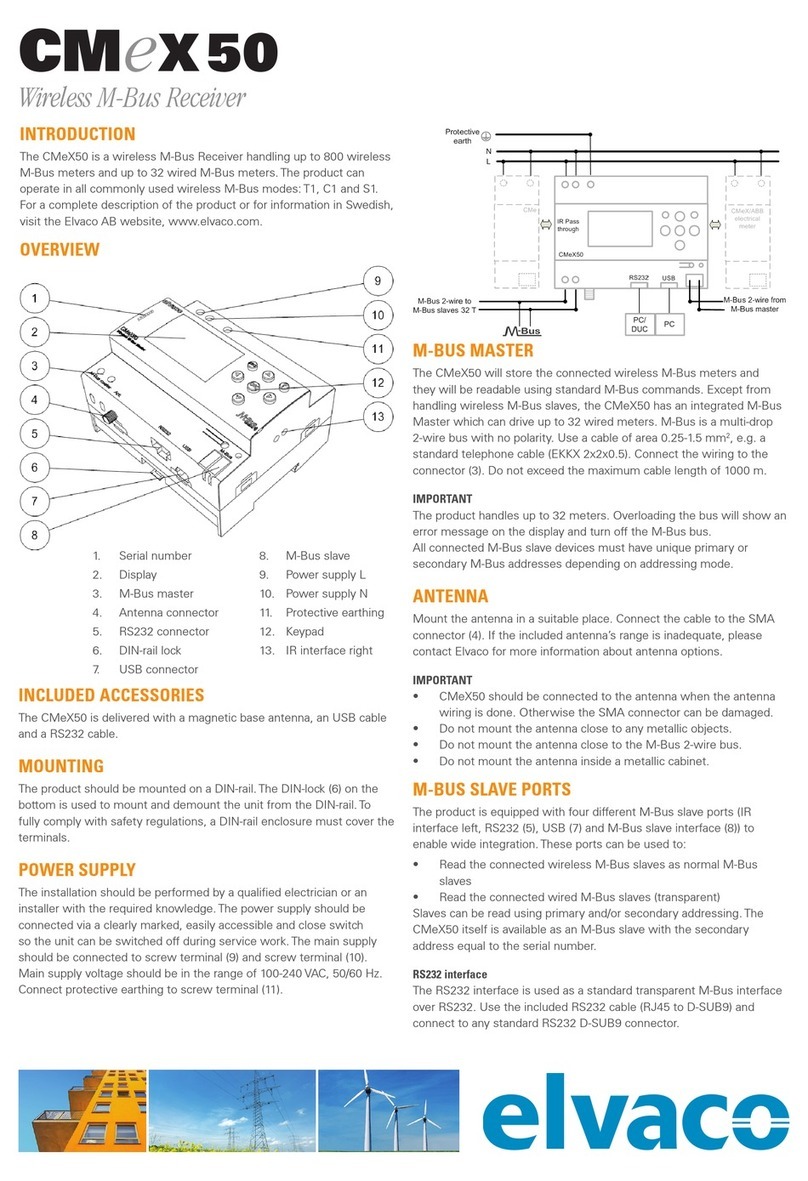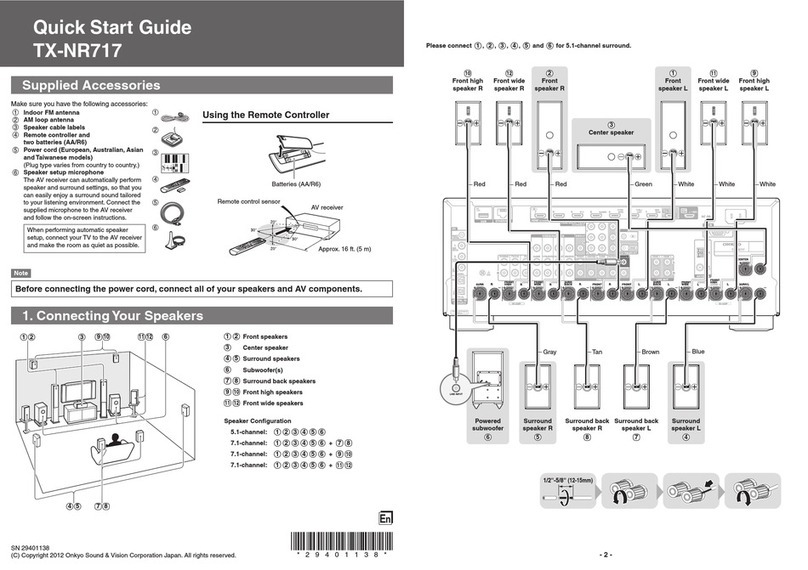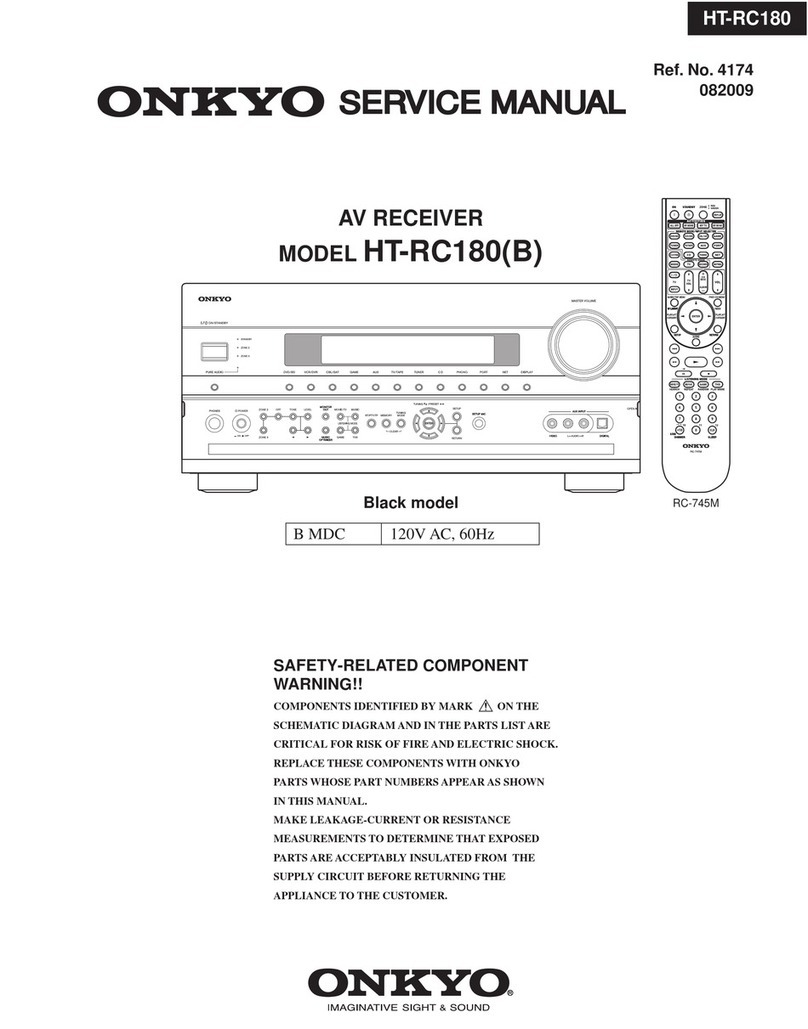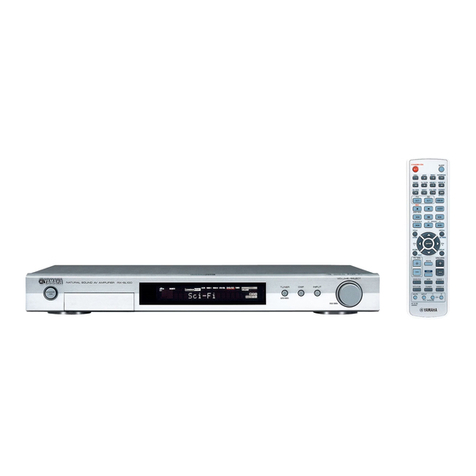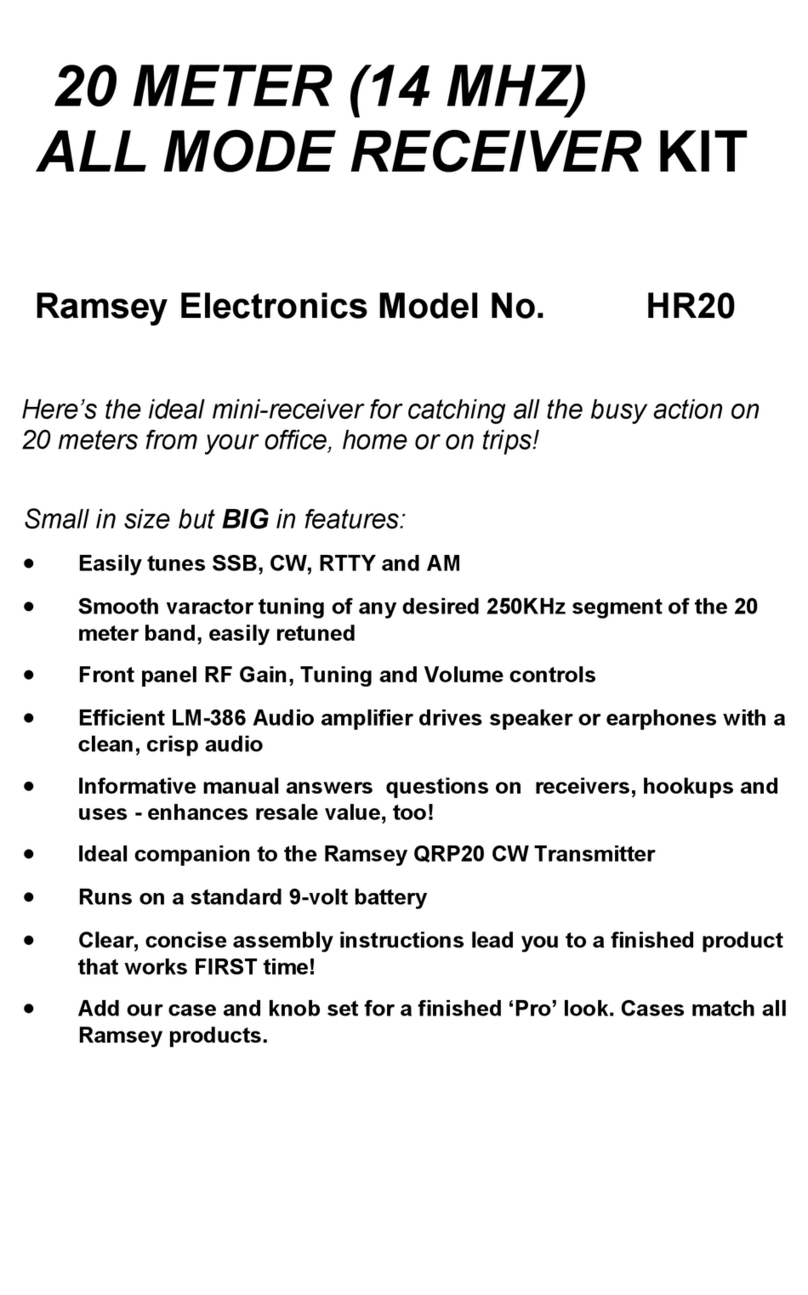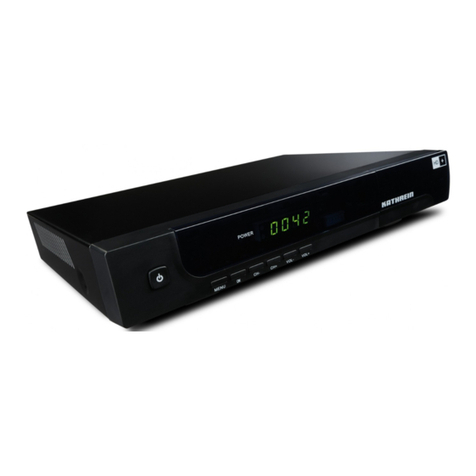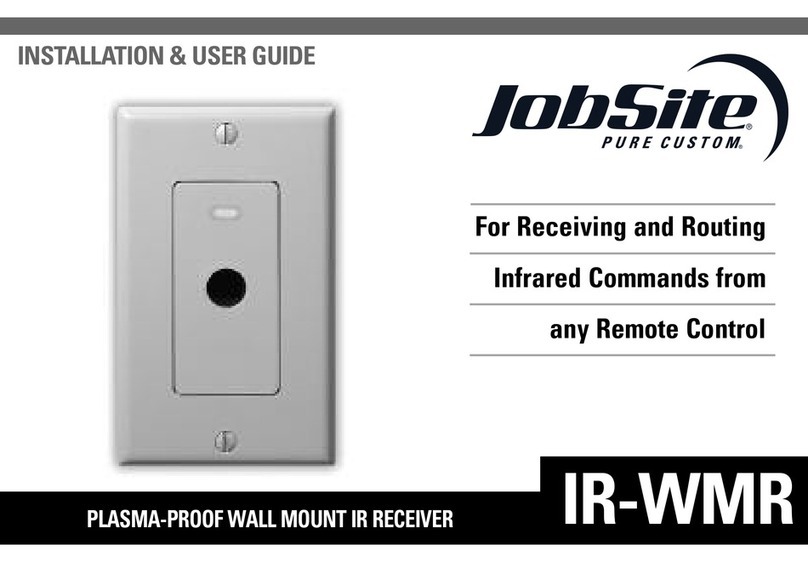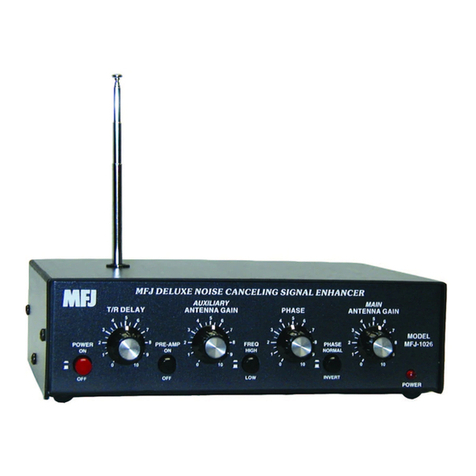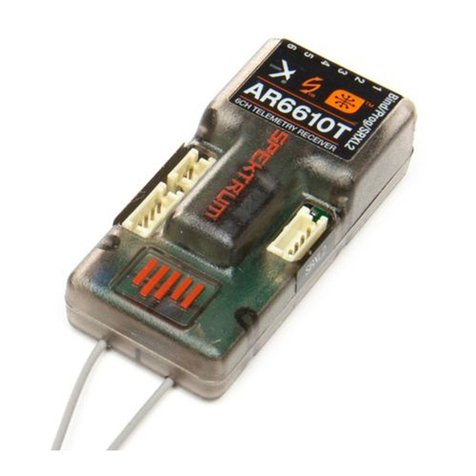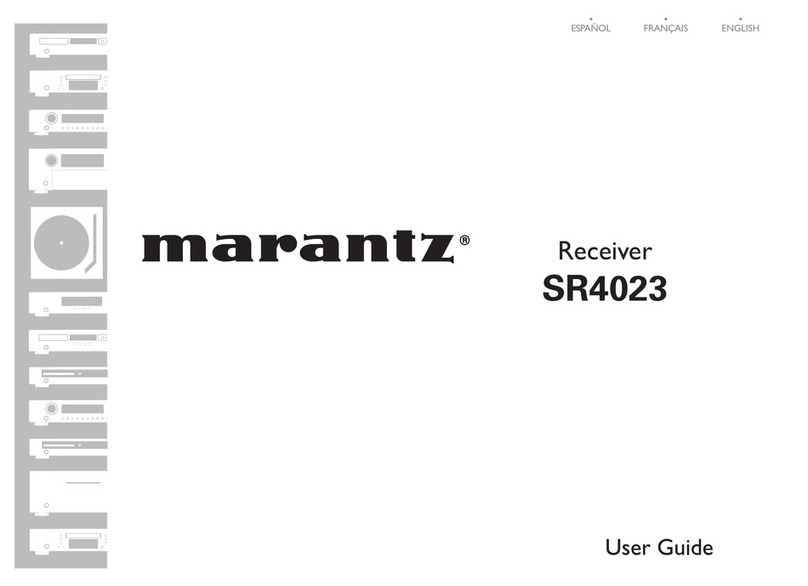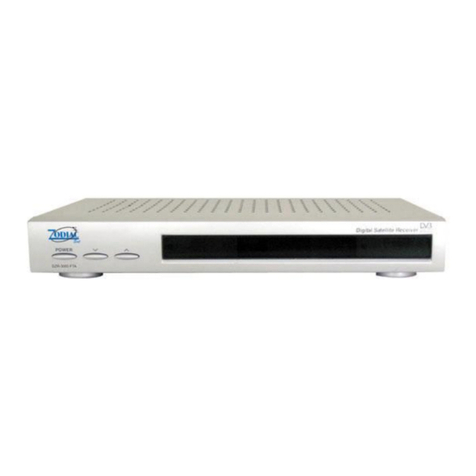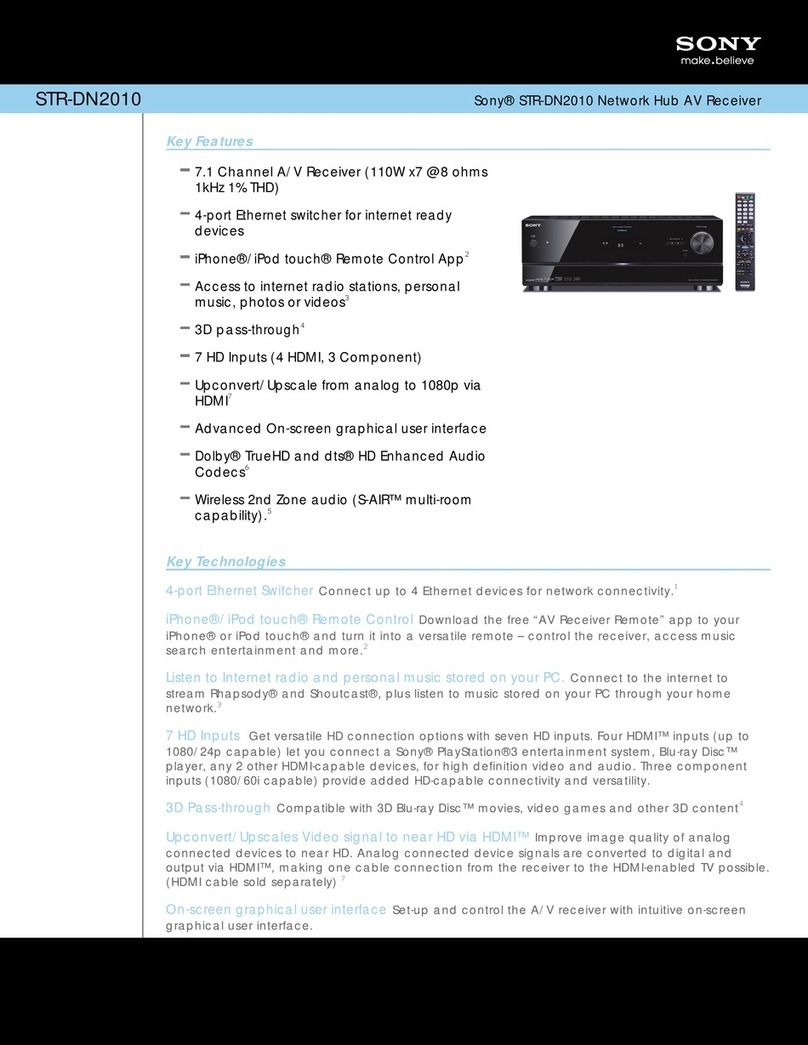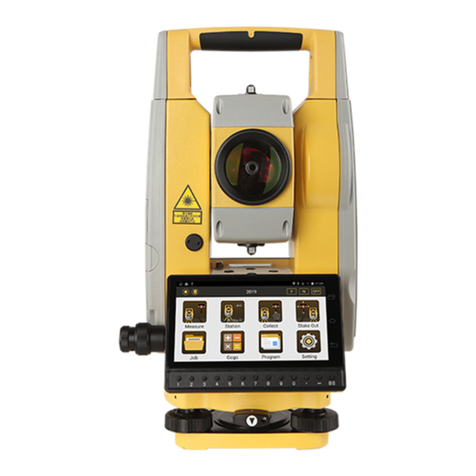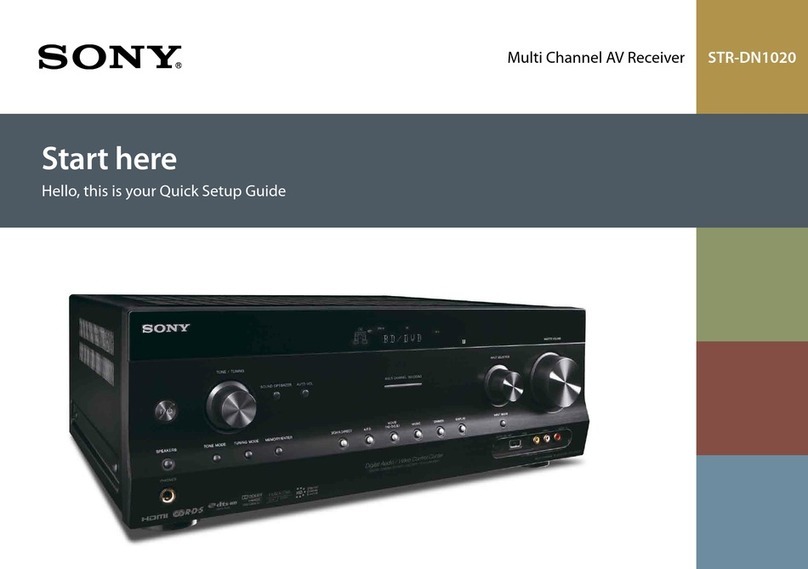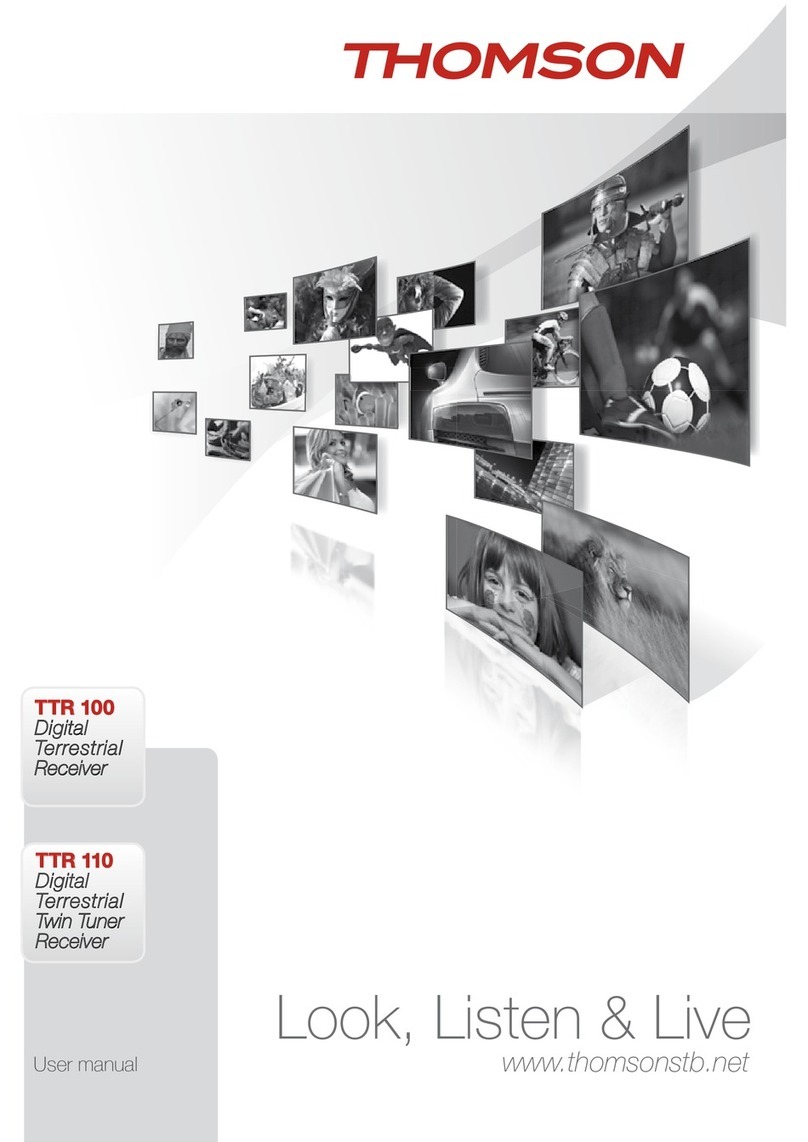Elvaco CMi4111 User manual

CMi4111 User’s Manual English
CMi4111
User’s Manual
English
v1.1

CMi4111 User’s Manual English
CMi4111 User’s Manual English
page | 2 (26)
[2020-06]
V1.1
Contents
1DOCUMENT NOTES .....................................................................................................3
1.1 COPYRIGHT AND TRADEMARK.........................................................................................3
1.2 CONTACTS..................................................................................................................... 3
2IMPORTANT USAGE AND SAFETY INFORMATION...................................................4
3USING THIS MANUAL ..................................................................................................5
3.1 PURPOSE AND AUDIENCE ............................................................................................... 5
3.2 ONLINE RESOURCES ......................................................................................................5
3.3 SYMBOLS.......................................................................................................................5
4INTRODUCTION............................................................................................................6
4.1 PURPOSE....................................................................................................................... 6
4.2 APPLICATION DESCRIPTION.............................................................................................6
4.3 PRODUCT FEATURES......................................................................................................6
4.4 COMPATIBILITY...............................................................................................................6
5GETTING STARTED......................................................................................................7
5.1 PURPOSE....................................................................................................................... 7
5.2 START-UP THE DEVICE.................................................................................................... 7
5.2.1 Network preparation.................................................................................................... 7
5.2.2 Activation and LED indications.................................................................................... 7
6ADMINISTRATION REFERENCE..................................................................................8
6.1 PURPOSE....................................................................................................................... 8
6.2 SECURITY AND ACCESS CONTROL................................................................................... 8
6.3 CONFIGURATION OPTIONS ..............................................................................................8
6.4 TIME HANDLING..............................................................................................................9
6.5 ADAPTIVE DATA RATE (ADR)..........................................................................................9
6.6 TRANSMIT INTERVAL.....................................................................................................10
6.6.1 EcoMode................................................................................................................... 10
6.7 MESSAGE FORMATS..................................................................................................... 10
6.7.1 Message structure..................................................................................................... 10
6.7.2 Structure and payload............................................................................................... 11
6.7.3 Meter communication error message........................................................................ 21
6.8 DOWNLINK................................................................................................................... 21
7TECHNICAL SPECIFICATIONS..................................................................................22
8TYPE APPROVALS.....................................................................................................24
9DOCUMENT HISTORY................................................................................................25
9.1 VERSIONS....................................................................................................................25
10 REFERENCES.............................................................................................................26
10.1 TERMS AND ABBREVIATIONS......................................................................................... 26
10.2 NUMBER REPRESENTATION ..........................................................................................26
10.3 EUROPEAN STANDARDS............................................................................................... 26

CMi4111 User’s Manual English
CMi4111 User’s Manual English
page | 3 (26)
[2020-06]
V1.1
1 Document notes
All information in this manual, including product data, diagrams, charts, etc. represents information on
products at the time of publication, and is subject to change without prior notice due to product
improvements or other reasons. It is recommended that customers contact Elvaco AB for the latest
product information before purchasing a CMi Series product.
The documentation and product are provided on an “as is” basis only and may contain deficiencies or
inadequacies. Elvaco AB takes no responsibility for damages, liabilities or other losses by using this
product.
1.1 Copyright and trademark
© 2020, Elvaco AB. All rights reserved. No part of the contents of this manual may be transmitted or
reproduced in any form by any means without the written permission of Elvaco AB. Printed in Sweden.
CMi Series is a trademark of Elvaco AB, Sweden.
1.2 Contacts
Elvaco AB Headquarter
Kabelgatan 2T
434 37 Kungsbacka
SWEDEN
Phone: +46 300 30250
E-Mail: [email protected]
Elvaco AB Technical Support
Phone: +46 300 434300
E-Mail: support@elvaco.se
Online: http://www.elvaco.com

CMi4111 User’s Manual English
CMi4111 User’s Manual English
page | 4 (26)
[2020-06]
V1.1
2 Important usage and safety information
The following safety precautions must be observed during all phases of the operation, usage, service or
repair of any CMi Series product. Users of the product are advised to convey the information to users and
operating personnel and to incorporate these guidelines into all manuals supplied with the product.
Failure to comply with these precautions violates safety standards of design, manufacture and intended
use of the product. Elvaco AB assumes no liability for customer’s failure to comply with these
precautions.
CMi4111 receives and transmits radio frequency energy while switched on. Remember that interference
can occur if the product is used close to TV sets, radios, computers or inadequately shielded equipment.
Follow any special regulations and always switch off the product wherever forbidden, or when you
suspect that it may cause interference or danger.

CMi4111 User’s Manual English
CMi4111 User’s Manual English
page | 5 (26)
[2020-06]
V1.1
3 Using this manual
3.1 Purpose and audience
This manual provides all information needed to mount, deploy and configure CMi4111 and targets
installers and system integrators.
3.2 Online resources
To download the latest version of this user’s manual, or to find information in other languages, please
visit http://www.elvaco.com/.
3.3 Symbols
The following symbols are used throughout the manual to emphasize important information and useful
tips:
The Note symbol is used to mark information that is important to take into consideration for
safety reasons or to assure correct operation of the meter connectivity module.
The Tip symbol is used to mark information intended to help you get the most out of your
product. It might for example be used to highlight a possible customization option related to the
current section.
Table 1 provides information on how the product should be used.
Symbol
Description
Waste electrical products should not be disposed of with household waste. Please recycle
where facilities exist. Contact your Local Authority for recycling advise.
Electrostatic-sensitive device. Please observe the necessary ESD protective measures when
installing the module.
Table 1: Usage information

CMi4111 User’s Manual English
CMi4111 User’s Manual English
page | 6 (26)
[2020-06]
V1.1
4 Introduction
4.1 Purpose
This chapter provides a general description of CMi4111. In the next-coming sections you will learn more
about possible applications for the product and how CMi4111 can be combined with other products to
build versatile solutions.
4.2 Application description
CMi4111 is a cost-effective meter connectivity module for a Landis+Gyr T230/T330 heat or cooling meter.
It uses a very energy-efficient scheme to deliver meter data to a receiving (application) server over a
LoRaWAN network. Meter data is securely transmitted, using LoRaWAN end-to-end security scheme.
4.3 Product features
CMi4111 offers a combination of battery operation with very long lifetime and a versatile application
through its many configuration options. Key features of the module include:
•Extensive battery lifetime
The module’s EcoMode feature enables the module to achieve a battery-lifetime of at least 11+1
years.
•No meter installation needed
As soon as the meter connectivity module is activated, it will join the LoRaWAN network and start
to deliver meter data, i.e. no manual steps need to be taken in order to install the product in the
meter.
•Quick commissioning
With Elvaco’s One-Touch Commissioning (OTC), deployment, configuration and key transferring
can be performed in a secure and flexible way. Use the Elvaco OTC App to enter your desired
settings and place your phone next to the meter. New settings will be applied via NFC.
•A unique and flexible message scheme
CMi4111 has several different message formats to choose from. This makes it easy to customize
the product to the unique demands of each application.
4.4 Compatibility
CMi4111 is compatible with Landis + Gyr T230 and Landis + Gyr T330 heat/cooling meters. Once the
module is mounted and starts up, a compatibility check is made to ensure that the CMi4111 module is
compatible with the meter firmware.

CMi4111 User’s Manual English
CMi4111 User’s Manual English
page | 7 (26)
[2020-06]
V1.1
5 Getting started
5.1 Purpose
This chapter provides instructions on how to get started with the CMi4111. After reading and carefully
following each step of this chapter, your meter connectivity module should be connected to the
LoRaWAN network.
5.2 Start-up the device
This section describes how to activate the module and connect it to the LoRaWAN network.
5.2.1 Network preparation
For the module to connect to the LoRaWAN network, it needs to be added in the network server. More
specifically, the following information about the device needs to be added: Device EUI, Application key
and Join EUI. (If using ABP mode, the following information should be registered instead: Application
Session key, Network Session key and Device address.)
Elvaco strongly recommends using Over-the-air activation (OTAA) §to facilitate deployment
and minimize the risk of duplicated keys.
5.2.2 Activation and LED indications
Module activation
Upon delivery, CMi4111 is set to passive mode, which means no messages will be transmitted from the
module. The module can be activated by:
Open the Elvaco OTC app (downloadable via Google Play) and scan the module through the meter’s
plastic cover. The module is mounted inside the meter above the display (make sure NFC is activated on
the phone). Go to Apply mode, set the Power mode to “active” and click Apply settings.Place the
phone on next to the meter again to scan the module. New settings are applied via NFC. You can make
sure that the module has joined the LoRaWAN network correctly by checking the “network join” field in
the Inspect tab of the OTC App.
Network join
When activated, CMi4111 will attempt to join the LoRaWAN network. If the module fails to join the
LoRaWAN network, it will perform retries until it succeeds. The time between each attempt will increase
for every attempt until it is performed once every day. A new join attempt cycle can be manually started
anytime by deactivating and activating the module using the Elvaco OTC App.
When the module has joined the LoRaWAN network, meter data will initially be transmitted from the
module every minute (regardless of transmit interval settings) to set the right data rate. After three
minutes of calibration, the module will start to deliver meter data using its configured settings. By using
the Elvaco OTC App, you can easily verify that the module is successfully communicating with the meter
(“Meter communication”) and is connected to the LoRaWAN network (“Network joined”).

CMi4111 User’s Manual English
CMi4111 User’s Manual English
page | 8 (26)
[2020-06]
V1.1
6 Administration reference
6.1 Purpose
This chapter contains detailed information about configuring options and the different message formats of
CMi4111.
6.2 Security and access control
CMi4111 has a configuration lock feature, which prevents unauthorized access to the module. When
configuration lock has been enabled, a Product Access Key will be needed to access the device. For
more information about security and access control for CMi4111, please refer to the One-touch
commissioning (OTC) documentation, available on the Elvaco website.
6.3 Configuration options
CMi4111 is configured via the Elvaco OTC App which can be downloaded in Google Play. It uses NFC to
transfer settings to the module. Downlink may also be used to for some applications, see section 6.8
Downlink for more information.
Please note that the Elvaco OTC app is only compatible with Android phones with Android
5.0 or later.
Table 2 provides a summary of all CMi4111 parameters and settings.
Field name
(Abbr.)
Description
Default value
Device access
Locked device &
correct Product
Access Key
or
Open device
Device
access
No
Product
Access
Key
Downlink
Meter ID
Meter identification number of
the meter. Not configurable.
N/A
Readable
Readable
N/A
Power mode
Used to activate/deactivate the
module.
Passive
Readable /
Writeable
Readable
N/A
Message format
The message format
determines the structure and
payload of the telegram sent
from the module.
0x05
(Standard)
Readable /
Writeable
Readable
Writeable
EcoMode
When activated, 11+1 years of
battery-life is guaranteed by
adapting the transmit interval
of the module to current signal
conditions.
On
Readable /
Writeable
Readable
Writeable
Transmit interval
Sets the number of minutes
between each transmission
from the module.
60 min
Readable /
Writeable
Readable
Writeable
Date & Time
Date and time set for the
meter.
N/A
Readable /
Writeable
Readable
N/A

CMi4111 User’s Manual English
CMi4111 User’s Manual English
page | 9 (26)
[2020-06]
V1.1
Set Time
Relative
Adjusts the time of the meter
relative to the current time.
N/A
N/A
N/A
Writeable
Set absolute
time
Sets the time of the meter
N/A
Writeable
N/A
N/A
Set UTC offset
Sets the UTC offset of the
meter
N/A
Readable /
Writeable
Readable
Writeable
Configuration
Lock
Locks the module to prevent
unauthorized access.
Open
Readable /
Writeable
Readable
Writeable
LoRaWAN settings
Device EUI
Unique module identification
number. Not configurable.
Device-unique
64-bit number
Readable
Readable
N/A
Activation type
Sets the way the device joins
the LoRaWAN network.
OTAA
Readable /
Writeable
Readable
Writeable
Network join
Displays whether the module
has joined the LoRaWAN
network or not.
N/A
Readable
Readable
N/A
Join EUI
Application identifier that
determines where data ends
up.
0x 94 19 3A 03 07
00 00 01
Readable /
Writeable
Readable
Writeable
Device address
32-bit address used by the
device to identify itself on the
LoRaWAN network.
N/A
Readable /
Writeable
Readable
Writeable
Current data
rate
The current data rate used for
the module.
N/A
Readable
Readable
N/A
Table 2: Configuration options
6.4 Time handling
The module relies on the meter’s clock for keeping time. Time in the meter is assumed to be in standard
local time (no DST). When synchronizing time in the meter using the OTC App, local standard time is
always used, even if DST is in effect. The timestamped meter data sent from the module can be adjusted
to be sent in UTC by specifying the “UTC offset” configuration parameter. The UTC offset will be
subtracted from the timestamp prior to transmission. If the meter is in Sweden, which uses CET (Central
European Time), it should have UTC offset set to +60 (+1h). In this case at time 12.00 a telegram is sent
with timestamp 11.00 as this is the corresponding UTC time. A meter in New York (USA) should have a
UTC offset of -300 (-5h) etc. A UTC offset of 0 means the meter time is used as-is.
6.5 Adaptive data rate (ADR)
CMi4111 supports Adaptive Data Rate (ADR), part of the LoRaWAN standard, where the network server
determines the optimal rate of communication for the module based on current signal conditions. In the
best radio conditions, the module will use its highest data rate (DR5) in order to be as energy efficient as
possible. When signal conditions are poor, the network server will incrementally lower the data rate until it
is able to receive the message. When the data rate is low, the energy consumption per telegram will

CMi4111 User’s Manual English
CMi4111 User’s Manual English
page | 10 (26)
[2020-06]
V1.1
increase.
6.6 Transmit interval
The transmit interval is used to set how frequently the module should transmit data on the LoRaWAN
network. The parameter can be set to a value between 5 and 1440 (i.e. between 5-minute and daily
values).
6.6.1 EcoMode
When EcoMode is active, a battery-lifetime of at least 11+1 years is guaranteed for the module. The
module is able to achieve this by using a table of allowed transmit intervals settings for each data rate.
When radio conditions are poor (and data rate is low), the module will be able to send data less
frequently in order to conserve battery-life. When signal conditions are good, the module will be able to
send data more frequently. When EcoMode is enabled, the module will continuously check if the set
transmit interval is “allowed” by the EcoMode table. If a lower transmit interval is needed for the specific
data rate in order to achieve 11 years of battery life, the module will adjust the parameter accordingly.
Table 3 shows the transmit intervals that the module will use for different data rates in order to achieve a
11-year battery-life.
Data rate
Transmit interval
DR0
120 minutes
DR1
60 minutes
DR2 - DR3
30 minutes
DR4 - DR5
15 minutes
Table 3: Transmit interval for different data rates in EcoMode
If EcoMode has been disabled, guarantees about battery-life is no longer valid (even if
EcoMode is activated later).
6.7 Message formats
CMi4111 has nine different message formats: Standard, Compact, JSON, Scheduled-daily redundant,
Scheduled-Extended, Combined heat/cooling, Simple billing, Plausibility check and Monitoring. Each
message format will be described in detail in this section.
6.7.1 Message structure
Message formats Standard, Compact, Scheduled-daily redundant, Scheduled-Extended, Combined
heat/cooling, Simple billing, Plausibility check and Monitoring are encoded on M-Bus format (date/time
field are encoded on M-Bus format F). Message format JSON is encoded on JSON format.
All M-Bus encoded messages begin with one byte specifying the message format used. Then follows a
sequence of data information blocks (DIBs), each one containing a data information field (DIF), a value
information field (VIF) and a data field (DATA). The structure of the telegram is illustrated in Figure 1.

CMi4111 User’s Manual English
CMi4111 User’s Manual English
page | 11 (26)
[2020-06]
V1.1
Figure 1: CMi4111 M-Bus message structure
For message type JSON, the data is presented as plain text.
Field
Size
Description
Message
format
identifier
1 byte
0x05 = Standard
0x06 = Compact
0x07 = JSON
0x08 = Scheduled –Daily redundant
0x09 = Scheduled - Extended
0x0A = Combined heat/cooling
0x0B = Simple billing
0x0C = Plausibility check
0x0D = Monitoring
Table 4: CMi4111 message formats
6.7.2 Structure and payload
In this section, a detailed description of each message format payload is provided.
Standard
Table 5 provides a detailed description of the payload of message format Standard.
DIB
Field
Size
Data type
Description
0
Message
format
identifier
1 byte
-
0x05 (= Standard)
1
Energy
6 bytes
INT32
Energy consumption (Wh, J)
0403xxxxxxxx = xxxxxxxx Wh
0404xxxxxxxx = xxxxxxxx * 10 Wh
0405xxxxxxxx = xxxxxxxx * 100 Wh
0406xxxxxxxx = xxxxxxxx kWh
040Exxxxxxxx = xxxxxxxx MJ
040Fxxxxxxxx = xxxxxxxx * 10 MJ
040Fxxxxxxxx = xxxxxxxx * 10 MJ
2
Volume
6 bytes
INT32
Volume (m3)
0413xxxxxxxx = xxxxxxxx * 0.001 m3
0414xxxxxxxx = xxxxxxxx * 0.01 m3
0415xxxxxxxx = xxxxxxxx * 0.1 m3
0416xxxxxxxx = xxxxxxxx m3
0417xxxxxxxx = xxxxxxxx * 10 m3

CMi4111 User’s Manual English
CMi4111 User’s Manual English
page | 12 (26)
[2020-06]
V1.1
3
Power
4 bytes
INT16
Power (W)
022Bxxxx = xxxx W
022Cxxxx = xxxx * 10 W
022Dxxxx = xxxx * 100 W
022Exxxx = xxxx kW
022Fxxxx = xxxx * 10 kW
4
Flow
4 bytes
INT16
Flow (m3/h)
023Bxxxx = xxxx * 0.001 m3/h
023Cxxxx = xxxx * 0.01 m3/h
023Dxxxx = xxxx * 0.1 m3/h
023Exxxx = xxxx m3/h
023Fxxxx = xxxx * 10 m3/h
5
Fw temp
4 bytes
INT16
Forward temperature (°C)
0258xxxx = xxxx * 0.001 °C
0259xxxx = xxxx * 0.01 °C
025Axxxx = xxxx * 0.1 °C
025Bxxxx = xxxx °C
6
Rt temp
4 bytes
INT16
Return temperature (°C)
025Cxxxx = xxxx * 0.001 °C
025Dxxxx = xxxx * 0.01 °C
025Exxxx = xxxx * 0.1 °C
025Fxxxx = xxxx °C
7
Meter ID
6 bytes
According to M-Bus
EN13757-3
identification field
Meter ID
0C78xxxxxxxx
8
Error bits
7 bytes
INT32
Error and warning flags
04FD17xxxxxxxx
For further information about Error bits please refer to
the meter’s manual
Table 5: Payload, message format Standard
Compact
Table 6 provides a detailed description of message format Compact.
DIB
Field
Size
Data type
Description
0
Message
format
identifier
1 byte
-
0x06 (= Compact)
1
Energy
6 bytes
INT32
Energy consumption (Wh, J)
0403xxxxxxxx = xxxxxxxx Wh
0404xxxxxxxx = xxxxxxxx * 10 Wh
0405xxxxxxxx = xxxxxxxx * 100 Wh
0406xxxxxxxx = xxxxxxxx kWh
0407xxxxxxxx = xxxxxxxx * 10 kWh
040Exxxxxxxx = xxxxxxxx MJ
040Fxxxxxxxx = xxxxxxxx * 10 MJ

CMi4111 User’s Manual English
CMi4111 User’s Manual English
page | 13 (26)
[2020-06]
V1.1
2
Meter ID
6 bytes
According to M-
Bus EN13757-3
identification
field
Meter ID
0C78xxxxxxxx
3
Error bits
7 bytes
INT32
Error and warning flags
04FD17xxxxxxxx
For further information about Error bits please
refer to the meter’s manual
Table 6: Payload, message format Compact
JSON
In message format JSON, data is presented on a plain text format. Table 7 provides a description of all
fields included in the telegram.
Field
Description
Message
format
identifier
07 (Message format JSON)
Energy
Energy consumption
Unit
Unit of energy consumption (Wh, kWh, MWh, GWh, J, kJ,
MJ or GJ)
Meter ID
Identification number of the meter in which the module is
mounted.
Table 7: Message format JSON
An example of a telegram for message format JSON is presented below:
Figure 2: JSON message example
Scheduled mode
For message formats of type “Scheduled” (Scheduled – Daily redundant and Scheduled –Extended), two
types of messages will be transmitted from the module - a clock message and a data message. The
difference between the two is described in Table 8. A detailed description of the payload of the clock
message is provided in Table 9.
Message
Time interval
Description
Clock
message
Once per day
The clock message presents the current time of the
meter. It can be used to verify that the clock is
correct and has not drifted more than accepted.
Data message
Determined by transmit
interval parameter.
The actual meter data collected from the meter. For
more information, see Table 11 and Table 12.
Table 8: Clock and data message
DIB
Field
Size
Data type
Description
0
Message
format
identifier
1 byte
-
0xFA (=Clock message)
{"E":12345678,"U":"kWh","ID":87654321}

CMi4111 User’s Manual English
CMi4111 User’s Manual English
page | 14 (26)
[2020-06]
V1.1
1
Date/time
6 bytes
32 bit binary integer
M-Bus type F
046Dxxxxxx = Valid date/time message
346Dxxxxxx = Invalid date/time message
Table 9: Payload, clock message
The clock message will be transmitted once every day and the data message at least (regulated by
transmit interval parameter or EcoMode) once every day. The transmit interval can only be set the values
listed in Table 10.
Note that although the meter readout will occur on top-of-the-hour, the data message will not necessarily
be transmitted at that exact time. The LoRa transmission will occur after a random delay of 0-15 minutes
to decrease the risk of collisions. The readout for the clock message occurs at a random hour (00:00-
23:00) at a random minute in the 35-45 interval and will be transmitted immediately after readout.
When using message format Scheduled, the transmit interval cannot not be set to higher
than 1440 minutes.
Parameter
Values
Unit
Transmit interval
60, 120, 180,240 360, 480, 720, 1440
Minutes
Table 10: Transmit interval options for Scheduled message formats
Daily redundant
The data message of Scheduled mode-daily redundant contains an accumulated daily energy field, which
is updated at 24:00 each day. In other words, depending on transmit interval settings and data rate, the
field will be included in between 1-24 telegrams per day. This will increase the probability of the value
being received. For example, if the transmit interval is set to “2”, the accumulated energy read at 24:00
will be transmitted 12 times during the 24 next coming hours (every 2nd hour).
DIB
Field
Size
Data type
Description
0
Message
format
1 byte
-
0x08 (= Scheduled –daily redundant)
1
Energy
6 bytes
INT32
Energy consumption (Wh, J)
0403xxxxxxxx = xxxxxxxx Wh
0404xxxxxxxx = xxxxxxxx * 10 Wh
0405xxxxxxxx = xxxxxxxx * 100 Wh
0406xxxxxxxx = xxxxxxxx kWh
0407xxxxxxxx = xxxxxxxx * 10 kWh
040Exxxxxxxx = xxxxxxxx MJ
040Fxxxxxxxx = xxxxxxxx * 10 MJ
2
Volume
6 bytes
INT32
Volume (m3)
0413xxxxxxxx = xxxxxxxx * 0.001 m3
0414xxxxxxxx = xxxxxxxx * 0.01 m3
0415xxxxxxxx = xxxxxxxx * 0.1 m3
0416xxxxxxxx = xxxxxxxx m3
0417xxxxxxxx = xxxxxxxx * 10 m3
3
Meter ID
6 bytes
According to M-
Bus EN13757-3
identification field
Meter ID
0C78xxxxxxxx
4
Error bits
7 bytes
INT32
Error and warning flags
04FD17xxxxxxxx

CMi4111 User’s Manual English
CMi4111 User’s Manual English
page | 15 (26)
[2020-06]
V1.1
For further information about Error bits please refer to
the meter’s manual
5
Meter
date/time
6 bytes
INT32
Meter date and time (YY-MM-DD HH:MM)
046Dxxxxxxxx
Bit 31-28 = Year-high*
Bit 27-24 = Month
Bit 23-21 = Year-low*
Bit 20-16 = Day
Bit 15 = Summertime flag**
Bit 12-8 = Hour
Bit 7 = Error flag***
Bit 6 = Reserved for future use
Bit 5-0 = Minute
*The year is read by combining the year-high and year-
low field. For example, year-high = 0010 and year-low
= 010 => year = 0010010
**0 = standard time, 1= daylight-saving time
***0 = timestamp is valid, 1 = timestamp is not valid
6
Accumulated
energy at
24:00
6 bytes
INT32
Energy consumption (Wh, J)
0403xxxxxxxx = xxxxxxxx Wh
0404xxxxxxxx = xxxxxxxx * 10 Wh
0405xxxxxxxx = xxxxxxxx * 100 Wh
0406xxxxxxxx = xxxxxxxx kWh
0407xxxxxxxx = xxxxxxxx * 10 kWh
040Exxxxxxxx = xxxxxxxx MJ
040Fxxxxxxxx = xxxxxxxx * 10 MJ
Note: Before a midnight reading has been performed
the Function field of the DIF is set to “value during
error state” to indicate that the value is not valid
Table 11: Message format Scheduled –daily redundant
Scheduled- Extended
The data message of Scheduled mode-Extended contains all the data fields from message format
Standard. In addition to these, it also includes the meter date/time to transmit messages on the full hour.
As for all Scheduled message formats, the transmit interval can only be set to the values included in
Table 10.
A detailed description of the payload in the message format is presented in Table 12.
DIB
Field
Size
Data type
Description
0
Message
format
1 byte
-
0x09 (= Scheduled –Extended)

CMi4111 User’s Manual English
CMi4111 User’s Manual English
page | 16 (26)
[2020-06]
V1.1
1
Energy
6 bytes
INT32
Energy consumption (Wh, J)
0403xxxxxxxx = xxxxxxxx Wh
0404xxxxxxxx = xxxxxxxx * 10 Wh
0405xxxxxxxx = xxxxxxxx * 100 Wh
0406xxxxxxxx = xxxxxxxx kWh
0407xxxxxxxx = xxxxxxxx * 10 kWh
040Exxxxxxxx = xxxxxxxx MJ
040Fxxxxxxxx = xxxxxxxx * 10 MJ
2
Volume
6 bytes
INT32
Volume (m3)
0413xxxxxxxx = xxxxxxxx * 0.001 m3
0414xxxxxxxx = xxxxxxxx * 0.01 m3
0415xxxxxxxx = xxxxxxxx * 0.1 m3
0416xxxxxxxx = xxxxxxxx m3
0417xxxxxxxx = xxxxxxxx * 10 m3
3
Power / Flow
/ Fw temp /
Rt temp
12 bytes
INT64
Byte 0-2 = DIF/VIF codes, 0x07FFA0
Byte 3 = Scaling of Power/Flow
-Bit 6..4 (n), 10n-3 W, n = 0..7
-Bit 2..0 (m), 10m-3 m3/h, m = 0..7
Byte 4-5 = Fw temp (lsByte -> msByte), °C, 2 decimals
Byte 6-7 = Rt temp (lsByte -> msByte), °C, 2 decimals
Byte 8-9 = Flow (lsByte -> msByte), 10m-6 m3/h
Byte 10-11 = Power (lsByte -> msByte), 10n-3 W
4
Meter ID/
Error bits
11 bytes
INT64
Byte 0-2 = DIF/VIF codes, 0x07FF21
Byte 3-6 = Error bits (lsByte -> msByte)
Byte 7-10 = Meter ID (lsByte -> msByte)*
*Sent in binary format.
5
Meter
date/time
6 bytes
INT32
Meter date and time (YY-MM-DD HH:MM)
046Dxxxxxxxx
Bit 31-28 = Year-high*
Bit 27-24 = Month
Bit 23-21 = Year-low*
Bit 20-16 = Day
Bit 15 = Summertime flag**
Bit 12-8 = Hour
Bit 7 = Error flag***
Bit 6 = Reserved for future use***
Bit 5-0 = Minute
*The year is read by combining the year-high and year-
low field. For example, year-high = 0010 and year-low
= 010 => year = 0010010
**0 = standard time, 1= daylight-saving time
***0 = timestamp is valid, 1 = timestamp is not valid
Table 12: Payload, message format Scheduled - Extended
6.6.2.5 Combined heat/cooling
Message format Combined heat/cooling is made to be used in meters that measures both heating and

CMi4111 User’s Manual English
CMi4111 User’s Manual English
page | 17 (26)
[2020-06]
V1.1
cooling energy.
Message format Combined heat/cooling is only meant to be used in combined heat/cooling
meters.
DIB
Field
Size
Data type
Description
0
Message
format
1 byte
-
0x0A (Combined heat/cooling)
1
Heat
energy
6 bytes
INT32
Heat energy consumption (Wh, J)
0403xxxxxxxx = xxxxxxxx Wh
0404xxxxxxxx = xxxxxxxx * 10 Wh
0405xxxxxxxx = xxxxxxxx * 100 Wh
0406xxxxxxxx = xxxxxxxx kWh
0407xxxxxxxx = xxxxxxxx * 10 kWh
040Exxxxxxxx = xxxxxxxx MJ
040Fxxxxxxxx = xxxxxxxx * 10 MJ
2
Cooling
Energy
8 bytes
INT32
Cooling energy consumption (MWh, kWh, GJ)
0483FF02xxxxxxxx = xxxxxxxx Wh
0484FF02xxxxxxxx = xxxxxxxx * 10 Wh
0485FF02xxxxxxxx = xxxxxxxx * 100 Wh
0486FF02xxxxxxxx = xxxxxxxx kWh
0487FF02xxxxxxxx = xxxxxxxx * 10 kWh
048EFF02xxxxxxxx = xxxxxxxx MJ
048FFF02xxxxxxxx = xxxxxxxx * 10 MJ
Note! Manufacturer-specific code 0x02 is used to
indicate secondary energy (i.e. “Cooling energy”)
3
Volume
6 bytes
INT32
Volume (m3)
0413xxxxxxxx = xxxxxxxx * 0.001 m3
0414xxxxxxxx = xxxxxxxx * 0.01 m3
0415xxxxxxxx = xxxxxxxx * 0.1 m3
0416xxxxxxxx = xxxxxxxx m3
0417xxxxxxxx = xxxxxxxx * 10 m3
4
Fw temp
4 bytes
INT16
Forward temperature (°C)
0258xxxx = xxxx * 0.001 °C
0259xxxx = xxxx * 0.01 °C
025Axxxx = xxxx * 0.1 °C
025Bxxxx = xxxx °C
5
Rt temp
4 bytes
INT16
Return temperature (°C)
025Cxxxx = xxxx * 0.001 °C
025Dxxxx = xxxx * 0.01 °C
025Exxxx = xxxx * 0.1 °C
025Fxxxx = xxxx °C
6
Meter ID
6 bytes
According to
M-Bus
EN13757-3
identification
field
Meter ID
0C78xxxxxxxx

CMi4111 User’s Manual English
CMi4111 User’s Manual English
page | 18 (26)
[2020-06]
V1.1
7
Error bits
7 bytes
INT32
Error and warning flags
04FD17xxxxxxxx
For further information about Error bits please refer to
the meter’s manual
Table 13: Message format, Combined heat/cooling
6.7.2.1 Simple billing
Table 14 provides a detailed description of the payload of message format Simple billing.
DIB
Field
Size
Data type
Description
0
Message
format
identifier
1 byte
-
0x0B (= Simple billing)
1
Energy
6 bytes
INT32
Energy consumption (Wh, J)
0403xxxxxxxx = xxxxxxxx Wh
0404xxxxxxxx = xxxxxxxx * 10 Wh
0405xxxxxxxx = xxxxxxxx * 100 Wh
0406xxxxxxxx = xxxxxxxx kWh
0407xxxxxxxx = xxxxxxxx * 10 kWh
040Exxxxxxxx = xxxxxxxx MJ
040Fxxxxxxxx = xxxxxxxx * 10 MJ
2
Meter ID
6 bytes
According to M-Bus
EN13757-3
identification field
Meter ID
0C78xxxxxxxx
3
Error bits
7 bytes
INT32
Error and warning flags
04FD17xxxxxxxx
For further information about Error bits please refer to
the meter’s manual
4
Energy in
wrong
mounting
position
8 bytes
INT32
Energy in wrong mounting position (Wh, J)
0483FF03xxxxxxxx = xxxxxxxx Wh
0484FF03xxxxxxxx = xxxxxxxx * 10 Wh
0485FF03xxxxxxxx = xxxxxxxx * 100 Wh
0486FF03xxxxxxxx = xxxxxxxx kWh
0487FF03xxxxxxxx = xxxxxxxx * 10 kWh
048EFF03xxxxxxxx = xxxxxxxx MJ
048FFF03xxxxxxxx = xxxxxxxx * 10 MJ
Note! Manufacturer-specific code 0x03 is used to
indicate “Energy in wrong mounting position”.
5
Previous
month
energy
7 bytes
INT32
Energy consumption previous month (Wh, J, Cal)
B40103xxxxxxxx = xxxxxxxx Wh
B40104xxxxxxxx = xxxxxxxx * 10 Wh
B40105xxxxxxxx = xxxxxxxx * 100 Wh
B40106xxxxxxxx = xxxxxxxx kWh
B40107xxxxxxxx = xxxxxxxx * 10 kWh
B4010Exxxxxxxx = xxxxxxxx MJ
B4010Fxxxxxxxx = xxxxxxxx * 10 MJ

CMi4111 User’s Manual English
CMi4111 User’s Manual English
page | 19 (26)
[2020-06]
V1.1
Note! Storage number 0x01 is used to indicate the
energy consumption for the previous month.
Table 14: Message format Simple billing
6.7.2.2 Plausibility check
Table 15 provides a detailed description of the payload of message format Plausibility check.
DIB
Field
Size
Data type
Description
0
Message
format
identifier
1 byte
-
0x0C (= Plausibility check)
1
Energy
6 bytes
INT32
Energy consumption (Wh, J)
0403xxxxxxxx = xxxxxxxx Wh
0404xxxxxxxx = xxxxxxxx * 10 Wh
0405xxxxxxxx = xxxxxxxx * 100 Wh
0406xxxxxxxx = xxxxxxxx kWh
0407xxxxxxxx = xxxxxxxx * 10 kWh
040Exxxxxxxx = xxxxxxxx MJ
040Fxxxxxxxx = xxxxxxxx * 10 MJ
2
Meter ID
6 bytes
According to M-Bus
EN13757-3
identification field
Meter ID
0C78xxxxxxxx
3
Error bits
7 bytes
INT32
Error and warning flags
04FD17xxxxxxxx
For further information about Error bits please refer to
the meter’s manual
4
Energy
when
mounted
in the
wrong
position
8 bytes
INT32
Energy in wrong mounting position (Wh, J)
0483FF03xxxxxxxx = xxxxxxxx Wh
0484FF03xxxxxxxx = xxxxxxxx * 10 Wh
0485FF03xxxxxxxx = xxxxxxxx * 100 Wh
0486FF03xxxxxxxx = xxxxxxxx kWh
0487FF03Xxxxxxxx = xxxxxxxx * 10 kWh
048EFF03xxxxxxxx = xxxxxxxx MJ
048FFF03xxxxxxxx = xxxxxxxx * 10 MJ
Note! Manufacturer-specific code 0x03 is used to
indicate “Energy in wrong mounting position”.
5
Missing
time
INT16
4 bytes
Missing time (s, min, h, days)
3420xxxxxxxx = xxxxxxxx s
3421xxxxxxxx = xxxxxxxx min
3422xxxxxxxx = xxxxxxxx h
3423xxxxxxxx = xxxxxxxx days
Note! “Value during error state” is intentional
6
Max Fw
temp
INT16
4 bytes
Maximum forward temperature (°C)
1258xxxx = xxxx * 0.001 °C
1259xxxx = xxxx * 0.01 °C

CMi4111 User’s Manual English
CMi4111 User’s Manual English
page | 20 (26)
[2020-06]
V1.1
125Axxxx = xxxx * 0.1 °C
125Bxxxx = xxxx °C
7
Max Rt
temp
INT16
4 bytes
Maximum return temperature (°C)
125Cxxxx = xxxx * 0.001 °C
125Dxxxx = xxxx * 0.01 °C
125Exxxx = xxxx * 0.1 °C
125Fxxxx = xxxx °C
Table 15: Message format Plausibility check
6.7.2.3 Monitoring
Table 16 provides a detailed description of the payload of message format Monitoring.
DIB
Field
Size
Data type
Description
0
Message
format
identifier
1 byte
-
0x0C (= Monitoring)
1
Energy
6 bytes
INT32
Energy consumption (Wh, J)
0403xxxxxxxx = xxxxxxxx Wh
0404xxxxxxxx = xxxxxxxx * 10 Wh
0405xxxxxxxx = xxxxxxxx * 100 Wh
0406xxxxxxxx = xxxxxxxx kWh
0407xxxxxxxx = xxxxxxxx * 10 kWh
040Exxxxxxxx = xxxxxxxx MJ
040Fxxxxxxxx = xxxxxxxx * 10 MJ
2
Volume
6 bytes
INT32
Volume (m3)
0413xxxxxxxx = xxxxxxxx * 0.001 m3
0414xxxxxxxx = xxxxxxxx * 0.01 m3
0415xxxxxxxx = xxxxxxxx * 0.1 m3
0416xxxxxxxx = xxxxxxxx m3
0417xxxxxxxx = xxxxxxxx * 10 m3
3
Power
4 bytes
INT16
Power (W)
022Bxxxx = xxxx W
022Cxxxx = xxxx * 10 W
022Dxxxx = xxxx * 100 W
022Exxxx = xxxx kW
022Fxxxx = xxxx * 10 kW
4
Flow
4 bytes
INT16
Flow (m3/h)
023Bxxxx = xxxx * 0.001 m3/h
023Cxxxx = xxxx * 0.01 m3/h
023Dxxxx = xxxx * 0.1 m3/h
023Exxxx = xxxx m3/h
023Fxxxx = xxxx * 10 m3/h
5
Fw temp
4 bytes
INT16
Forward temperature (°C)
0258xxxx = xxxx * 0.001 °C
0259xxxx = xxxx * 0.01 °C
025Axxxx = xxxx * 0.1 °C
025Bxxxx = xxxx °C
Other manuals for CMi4111
1
Table of contents
Other Elvaco Receiver manuals
